Meet The Smiths
By:
May 29, 2014
…organized alphabetically, from ADRIAN to ZADIE.
Dedicated to our friend Jacob Covey, in hopes this will inspire him to design a HiLo Heroes book.
META-HILO HERO SERIES: By George! | Meet the Smiths | Towards a HiLo Hero Color Wheel

During Iron Maiden’s mid-’80s Golden Age, ADRIAN SMITH (born 1957) was the professional bloke next door. He didn’t have the West Ham hooligan bombast of Steve Harris or the expressive theatricality of Bruce Dickinson. He was no menacing, big-nosed batterer like Nicko McBrain. And though he was often seen duelling in synchronized spandex lunges with his fellow guitarist, Dave Murray, there was none of that feline craftiness in his face. He was just the quiet ordinary one who got on with the job. As he once told Dickinson after a night on the booze: “The thing about me is, all I’m interested in is just having a bit of a sing and a play.” But what humility: his licks had an effortless brilliance and lazy originality that legions of teenagers have, ironically, tried so hard to replicate with hours of practice in their bedrooms. Up until this point I’ve written in the past tense, because Smith left Iron Maiden in 1990. Yes, he rejoined in 1999, but I’m in denial. To preserve my own mental health, I pretend that Iron Maiden split up after Powerslave. For on that album, and on the two before it, you can hear what I think is Iron Maiden’s greatest contribution to the heavy metal canon. And a sizable chunk of this greatness is down to Adrian Smith’s mastery of the axe-wielding arts. — BY PATRICK CATES
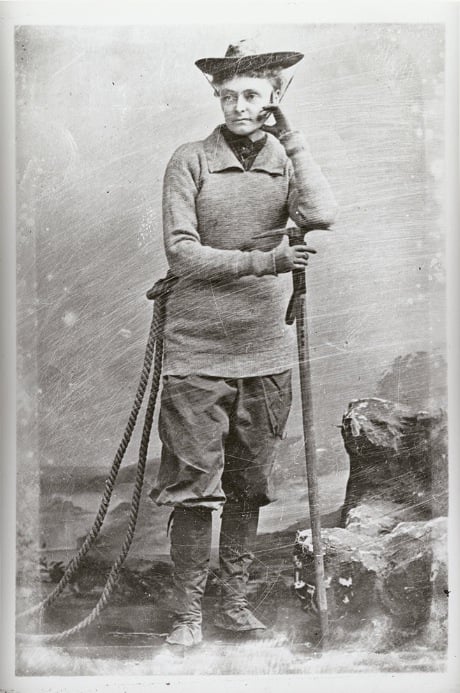
Remember when President Obama wanted to nominate Elizabeth Warren as director of the Consumer Financial Protection Bureau but certain politicians and financial institutions quashed that idea. Instead, Warren ran for and won a Senate seat in Massachusetts. ANNIE SMITH PECK (1850–1935) wanted to attend Brown University like her brothers but was denied admission because she was a woman. (In his 1873 bestseller Sex in Education, Harvard professor Edward H. Clarke had “proven” that higher education ruined women’s minds and shriveled their reproductive organs.) Instead, Peck left Providence, R.I., behind and went on to earn a Master’s degree in Greek from the University of Michigan, becoming a professor of archaeology and Latin. Along the way, the intrepid philologist took up mountaineering, scaling peaks in the Tyrolean Alps, volcanoes in Mexico, and eventually the Matterhorn — which she did while wearing trousers. At a time when women could be arrested for donning men’s clothes, this sartorial act didn’t land Peck in jail but she did earn a certain notoriety. At age 58, after five failed attempts, she finally summited the north peak of Mount Nevado Huascarán in Peru. Although it was not as high as she had estimated, Peck became the only woman to make the first ascent of one of the world’s major peaks. Three years later when she reached the top of Mount Coropuna, the suffragette mountaineer planted a flag that proclaimed, “Votes for Women.” That dream would become a reality when Peck was 70. — BY ELINA SHATKIN
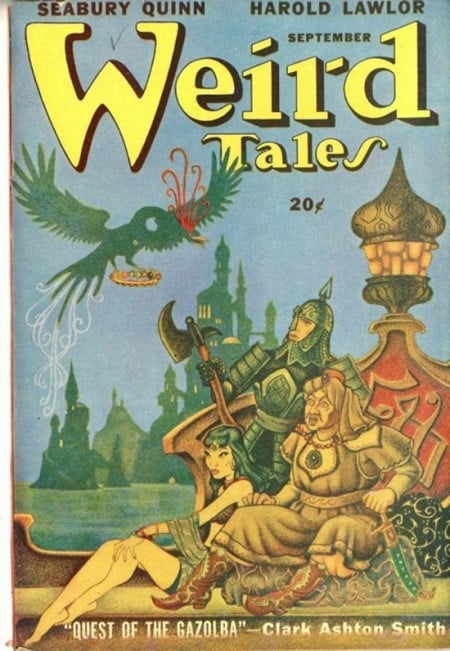
In the 1910s, self-educated Californian teenager CLARK ASHTON SMITH (1893-1961) discovered Baudelaire’s ironic, apocalyptic, dystopian poems; under their uncanny influence, he would become not only an acclaimed poet (particularly for “The Hashish Eater; Or, the Apocalypse of Evil”) but one of his era’s most imitated writers of “weird” fiction. Along with pen pals H.P. Lovecraft and Robert E. Howard, with whom he swapped the monikers of invented gods and places, the linguistically extravagant (“For at my call a hippogriff hath come,/And firm between his thunder-beating wings/I mount the sheer cerulean walls of noon/And see the earth, a spurnèd pebble, fall — /Lost in the fields of nether stars — and seek/A planet where the outwearied wings of time/Might pause and furl for respite…”) author made the years 1933-37 a Golden Age for the pulp magazine Weird Tales. Smith also wrote fiction — often about egotism and its supernatural punishment, usually from an ironic perspective — for Strange Tales, Astounding Stories, Stirring Science Stories, and Wonder Stories. Of particular interest to Radium Age sf fans is Smith’s Zothique, “the last continent of earth, when the sun is dim and tarnished.” In later life, he was also a painter and sculptor. PS: Lovecraft named one of his dark wizards “Klarkash-Ton.” — BY JOSHUA GLENN
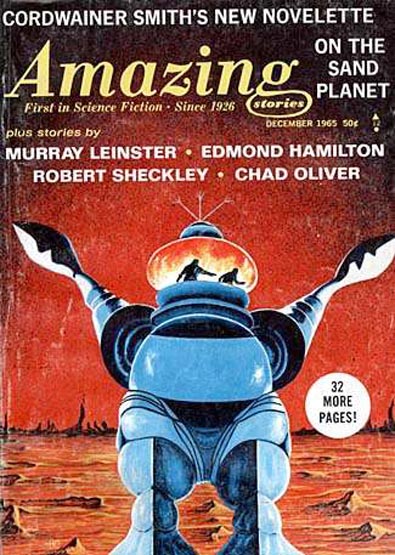
Set like jewels within a vast diadem of a single future history, the SF stories and solitary novel penned by CORDWAINER SMITH (1913-66) in the ’50s and early ’60s transcend the American pulps in both style and substance. Formally, they slip and slide like wry Orientalist fables (in real life, Smith was an army intelligence officer and East Asian expert named Paul Linebarger). Thematically, Smith explored the inner landscapes opened up by postwar mind science. A line can certainly be traced between Psychological Warfare, a classic military text that Linebarger published in 1948, and Smith’s widely praised 1950 story “Scanners Live in Vain,” in which interstellar pilots neurologically zombify themselves in order to withstand the “Great Pain of Space.” Like Philip K. Dick, Smith’s psychological concerns bloomed into religious ones, and the post-human nostalgia and liberation theology of some of his tales, partly rooted in his deepening Anglican faith, hold up a hard mirror to the simultaneous shattering and retrenchment of the religious imagination that characterizes our days. — BY ERIK DAVIS
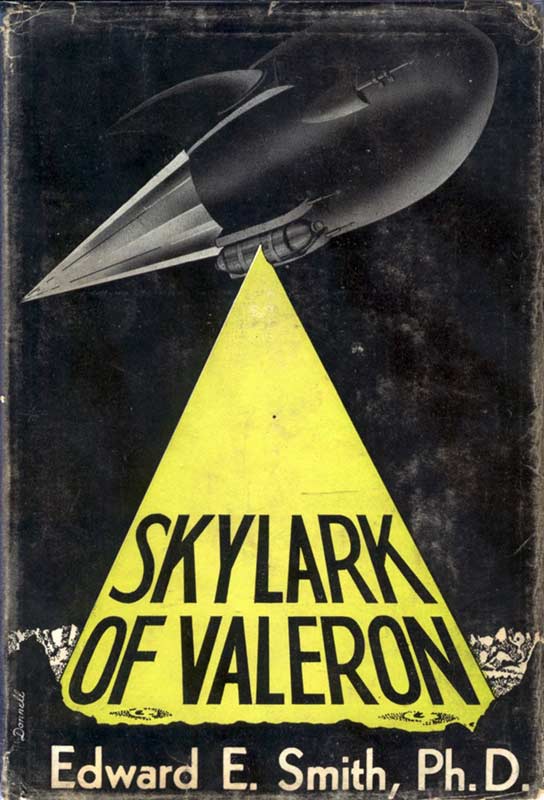
Though he wasn’t nearly as talented a stylist, nor as deep a thinker as, say, his exact contemporaries Olaf Stapledon, Thea von Harbou, and Karel Čapek, E.E. “DOC” SMITH (1890-1965) was something wonderful that these Radium Age sf authors were not: a pulp writer. He earned a living not as a litterateur, but as a food engineer; some claim that he developed the first process for making powdered sugar adhere to doughnuts. Pulp writers whose prose is particularly rococo can be forgiven any shortcomings — and Smith’s imagination was beyond far-out. Though not quite the first “space opera” writer, he almost single-handedly popularized that subgenre — not to be confused with “planetary romance” — via his epic Skylark (serialized 1928-65) and Lensman (1937-50) series. In these eleven books, innumerable stories, and his novel Spacehounds of IPC (serialized in ’31), Smith dreamed up: a future in which space travel was common; whiz-bang technology that would inspire stealth fighters, C3-based warfare, and the Strategic Defense Initiative; and the Galactic Patrol, an interstellar law-enforcement agency and military force without which we mightn’t have, e.g., Iain M. Banks’ “Culture” novels, or Orson Scott Card’s Ender’s Game. Also: no Smith, no Star Wars. Smith is better. — BY JOSHUA GLENN
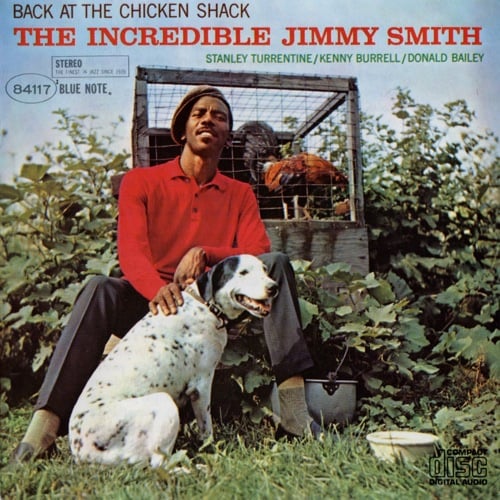
History is a set of revolving wheels, each transmuting a Temporal Harmonic System of infinite possibility. This system is itself augmented by a two-speed Rotating Symbolism that brings the warm disjunctures of the Doppler Effect to aspects of ideology and subjectivity. Oddly enough, this system is mirrored by the mechanics of the Hammond Organ and the Leslie Speaker. It’s the instrument of choice for anybody seeking a Scooby-Snacked Polyphony of Aural-Dialectics, evangelizing our nimbus-dreams and bulk-load-bash through Rotational Bliss. The Hammond Organ found a perfect human manifestation in the form of JIMMY SMITH (1925 or 1928-2005), the profound jazz-presence who pushed the Hammond’s delicacy and dirt further than all who came before. Smith’s hands, heart and pedal-pump feet baked perfect batches of Infinity Bread, smothered with the Groove and the Glory of Sanctified Butter. Jimmy’s music cries out to us still. His message is clear: Fast or Slow, a Devotion to Rotation blesses both the Godly and the Groovy, and all who spin between. — BY GREG ROWLAND

“Manchester has produced many men of this kind. Hard men with hard livers; faces like un-made beds.” MARK E. SMITH (born 1957) cofounded The Fall in 1976 while living in a musician’s collective, beginning merely with the idea of “reading out poetry over a bass and a guitar.” “We are Northern white crap that talks back. The difference between you and us is that we have brains.” For over thirty-five years Smith has been reading, chanting, growling, and spitting out his poetry (but rarely singing). “I tell ya, the Dutch are weeping/In four languages, at least.” He rejects the title of musician, despite being the leader of one of independent music’s most revered bands, claiming to disdain musicians, a claim borne out by the exodus of more than sixty Fall members since the band’s inception. (“I like to push people, till I get the truth out of them. Get them drunk or whatever. Then discover what they really think. Push them and push them and push them.”) His ear, though, is superb. And his voice is instantly recognizable — sibilants drawn out beyond reason, and unnecessary schwas inserted at the ends of phrases. Smith’s lyrics are only occasionally comprehensible and when comprehensible, generally inscrutable. (“Goddamn the pedantic Welsh.”) His intelligence is vast and his commitment to reflect the world, transmuted and ugly as he sees it, is unshakeable. “A lot of it is just driven by misanthropy….It gets worse as I get older.” Smith claims to hate Manchester, but has only left it for a two-year stint in Edinburgh. Other cities seem too comfortable; Smith needs the raw material of Manchester for his craft. “Keep it simple, cock.” Smith’s merciless prodding and churning of his musical backers has been effective, it seems; the most recent of the over fifty Fall albums (maybe a couple of dozen fewer if you don’t count the live albums) are among the band’s strongest. On his birthday, raise a pint to Mark E. Smith (he certainly will) and the Mighty Fall, whoever they may be. “If it’s me and your granny on bongos, then it’s [the] Fall.” — BY TOR AARESTAD
“Mark E. Smith Guide to Writing Guide. Day by Day Breakdown.
Day One: Hang around house all day writing bits of useless information on bits of paper.
Day Two: Decide lack of inspiration due to too much isolation and non-fraternisation. Go to pub. Have drinks.
Day Three: Get up and go to pub. Hold on in there a style is on its way. Through sheer boredom and drunkenness, talk to people in pub.
Day Four: By now people in the pub should be continually getting on your nerves. Write things about them on backs of beer mats.
Day Five: Go to pub. This is where true penmanship stamina comes into its own as by now guilt, drunkenness, the people in the pub and the fact you’re one of them should combine to enable you to write out of sheer vexation.
Day Six: If possible, stay home. And write. If not, go to pub.”

“She always suggested some kind of mildly discommoded bird, perhaps a jackdaw with a touch of weltanschauungangst,” wrote Jonathan Williams of friend and fellow poet STEVIE SMITH (Florence Smith, 1902-71). Born in Hull and raised in Palmers Green (London), where she’d live nearly the rest of her life with her Aunt Madge, she got her nickname from English jockey Steve Donoghue, whom she resembled when riding. She attended secretarial school; her experience as an office worker inspired her first work, Novel on Yellow Paper (1936). Two more strange, daring novels would follow, but it was her poetry — often accompanied by her own doodles — from A Good Time Was Had By All (1937) forward that made her reputation. Kenneth Cox said of Smith: “Ridiculous and terrifying, aunt and prophetess, her voice between giggle and scream, cracking the provincial vicarage, declaring again and again: there is no formula for poetry, no school, no authority, nothing but the spirit that moves and the wit and the nerve to give it utterance.” A desultory 1953 suicide attempt led to Stevie’s early retirement from the office; this was followed by the brilliant Not Waving But Drowning (1957). Five years later after her death (brain tumor), Glenda Jackson played her in the astonishing bio-pic Stevie. — BY BRIAN BERGER

In 2000, ZADIE SMITH (born 1975) published her first novel, White Teeth, which she finished writing while still in college. Its events, which parallel her own history growing up in North London, child of a Jamaican mother and white father, capture the intense feelings of global interconnection and rootlessness that seem so present in our age. Through a mosaic of characters, Smith explores the simultaneous commitments an individual has to her history, her spouse, her country, her children — and the mess these commitments make when they point in different directions, as they always must. Smith is a stand-up comic, mimicking the speech of frustrated Indian wives, working-class English blokes, teenagers (Jewish, half-Jamaican), stoned millenarians, or the middlebrow-striving-for-highbrow middle class at a furious pace. Smith damned the book herself shortly after publication, calling it the “literary equivalent of a hyperactive, ginger-haired tap-dancing 10-year-old.” But like Shirley Temple, the energy erupts out of White Teeth — the characters are brilliant caricatures, the code-switching required to produce the dialogue is wondrous, and it’s funny. In future books, she has continued to sketch out this world of second-generation immigrants, surprising religious converts (Black Jews!), interracial marriage, strikingly odd characters (hello, Alex-li Tandem), and troubled identity… but never so vibrantly as in White Teeth, the new millennium’s first perfect novel. — BY TOR AARESTAD
META-HILO HERO SERIES: By George! | Meet the Smiths | Towards a HiLo Hero Color Wheel
